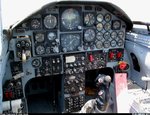davparlr
Senior Master Sergeant
This is an impressive takeoff, used for show. Takeoff, hold altitude to not remember speed, and hold attitude going up, and performed vertical recovery at 10k. Real time to time max is to accelerate to climb speed and hold. The T-38 first flew in 1959 and will continue to train pilots till 2040.
View: https://www.youtube.com/watch?v=LWu C-a7QQ
C-a7QQ
View: https://www.youtube.com/watch?v=LWu
 C-a7QQ
C-a7QQ







